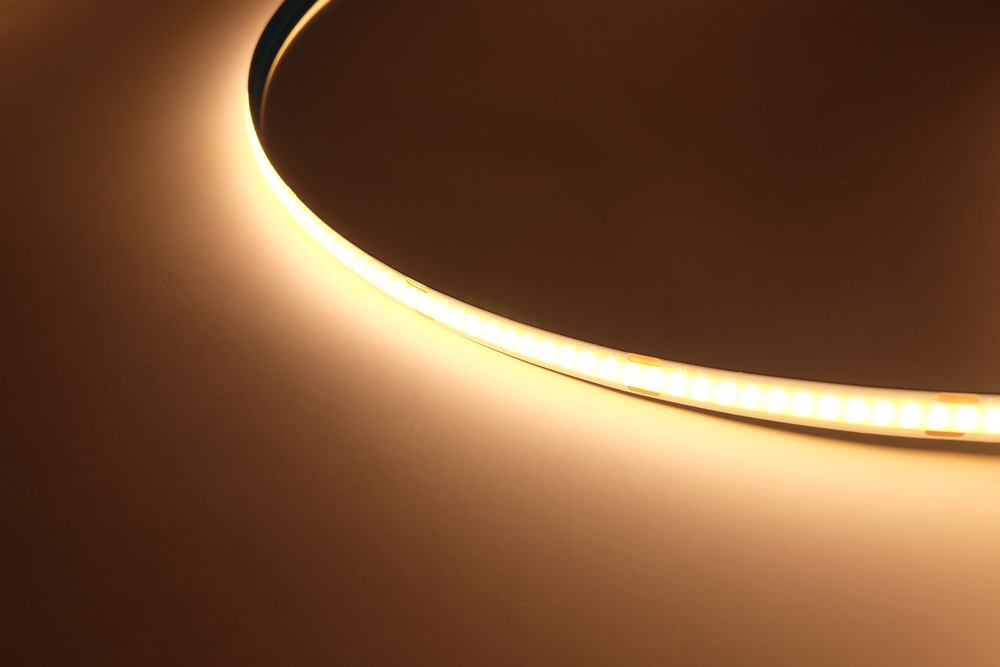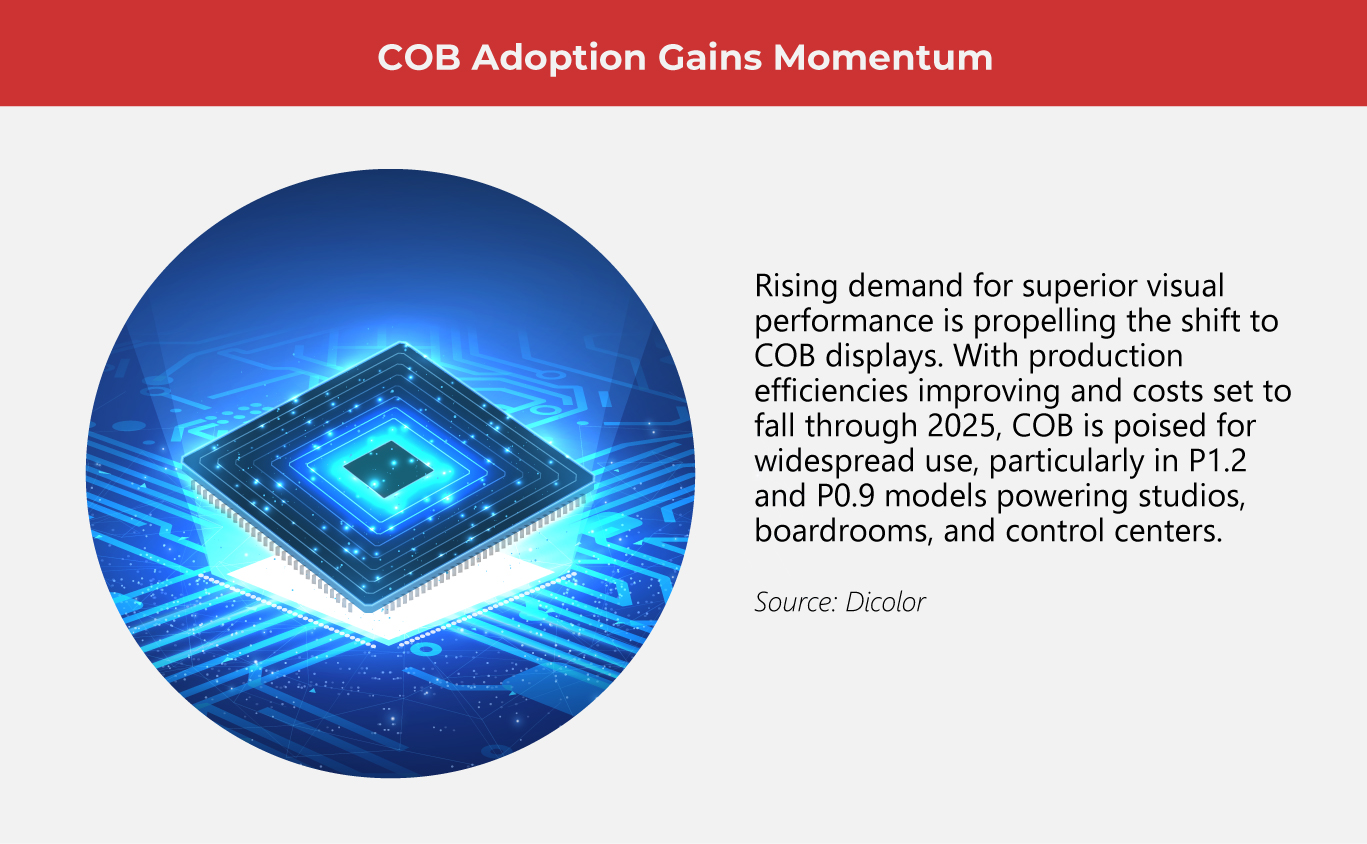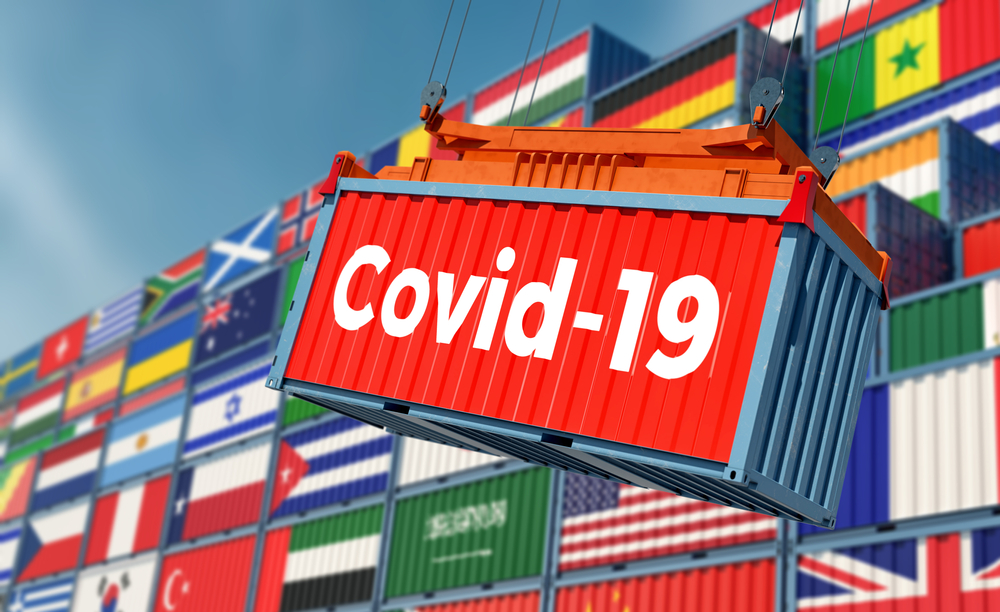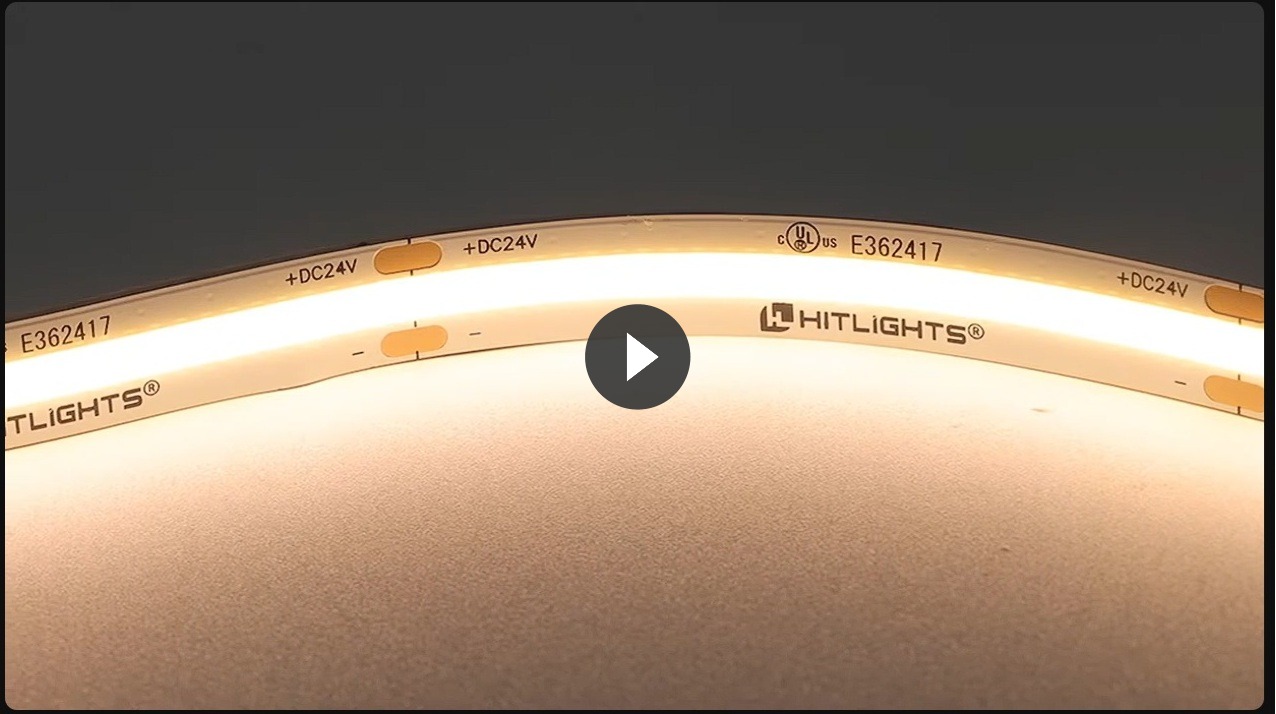Top 7 Advantages of Using Chip on Board Tech

Choosing the right LED technology has become crucial for integrators aiming to stay future-ready. While Surface-Mounted Device (SMD) has long dominated the industry, Chip on Board (COB) technology is quickly emerging as the preferred solution for next-generation lighting and display applications, offering superior performance and efficiency.
Chip on Board (COB) technology is an advanced manufacturing solution that mounts bare integrated circuits directly onto printed circuit boards and seals them with epoxy for protection. By eliminating traditional ceramic or plastic packaging, COB simplifies production, reduces size and weight, and supports the creation of compact, high-performance electronic devices.
COB assembly for printed circuit boards (PCBs) generally follows two main processes:
- Flip Chip on Board (FCOB)
In this case, the solder is applied directly onto the PCB rather than the chip. The chip is then positioned like a standard surface-mounted device and reflowed along with other components. To ensure reliable assembly, designers must carefully plan the footprint layout, following principles similar to those used for ball grid arrays but adjusted for bump size. This process allows for compact configurations, efficient electrical connections, and helps improve operational efficiency in high-performance assemblies.
(Also read: Flip Chip Tech Is Here to Stay)
- Wire Bonding
This method involves securing the chip to the board with adhesive. Fine wires are welded between each device pad and its corresponding contact on the PCB, then sealed with epoxy to protect against corrosion and mechanical stress. For this setup, larger pad sizes and precise spacing are crucial to ensure strong, stable connections, making it a preferred technique in global manufacturing for high-precision devices.
COB in LED lighting
One of COB’s most popular applications is light-emitting diode (LED) lighting, where the technology has transformed how illumination is produced and delivered. Instead of using individual LED packages, COB has shifted electronic manufacturing by mounting multiple LED chips directly onto a substrate such as silicon carbide or sapphire, creating a compact, high-intensity light source that operates with greater efficiency and consistency.
COB LEDs are known for their ability to produce smooth, uniform light without shadows or uneven brightness. Their compact structure allows for a smaller footprint while maintaining powerful output, and the simplified circuitry reduces assembly complexity. Thermal analysis shows that improved heat dissipation contributes to longer component life and stable performance, even in continuous-use environments.
Today, COB LEDs are used in a wide range of applications, including the automotive market, medical electronics, stage equipment, and various consumer electronic devices.
(Also read: Need to Test Led Strips? Here Are 10 Effective Ways)
Why COB tech stands out: 7 notable benefits
From brighter output to longer lifespan, here are eight reasons why COB technology is redefining performance and reliability in industrial manufacturing.
- Miniaturization
Size matters when it comes to COB technology. By fitting multiple LED chips into a compact space, manufacturers achieve higher brightness, fewer components, and sleeker designs. This miniaturization not only boosts efficiency but also enables the creation of modern, space-saving fixtures ideal for today’s lighting and electronic applications in manufacturing industries.
- Assembly adaptability
Product validation becomes more streamlined with COB technology, as its adaptable assembly methods allow quicker prototyping and testing. This enables design and engineering teams to refine layouts with ease, accelerating time-to-market while ensuring consistent reliability in various products.
- Design versatility
Whether for compact low-power devices or high-intensity lighting, this technology supports a wide voltage range, adapting to diverse product needs. Its turnkey design, assembly, and testing capabilities streamline production, while multilayer and double-sided PCB configurations enable intricate, high-density circuitry with dependable performance.
- Longevity
Tailoring encapsulation materials like epoxy or silicone can significantly enhance a COB LED’s product life profile. While epoxy remains a standard sealant for protecting chips and wire bonds, silicone resins offer superior resistance to heat, moisture, and yellowing. Studies show epoxy-encased LEDs may lose up to 81% lumen output in 1,500 hours vs 1 to 5.5% for silicone, underscoring silicone’s growing role in high-performance COB designs.
- Reliable production
Established COB assembly processes ensure consistent performance and dependable quality. Manufacturers employ rigorous pre- and post-assembly product testing, including visual inspection, stress assessment, and functionality checks, to identify defects early and maintain high production standards. Such quality control practices strengthen product validity and support large-scale deployment in demanding electronic manufacturing environments.
- Reduced cost
Switching to COB packaging cuts material and labor expenses by eliminating separate chip casings and simplifying the light-engine module. Manufacturers report up to 30% cost savings compared to traditional SMD packaging, especially in device packaging and module production.
- Wide operating range
COB LEDs such as the LUXEON CoB series are built to perform reliably in harsh conditions, operating from -40 °C up to 150 °C. Manufacturers verify performance across this broad span, including storage and environmental stresses, to guarantee stable light output and longevity even under extreme temperature swings.

7 Key Steps in Chip-on-Board Manufacturing
The Chip-on-Board (COB) process involves seven critical stages to create reliable, high-performance assemblies:
- Substrate Preparation
The PCB is cleaned and coated with a conductive adhesive to ready it for chip placement.
- Die Attach
Bare chips are precisely positioned onto the adhesive-coated areas using pick-and-place machines or specialized tools.
- Bonding
Conductive solder bumps secure chips to the PCB, ensuring strong electrical connections with board traces.
- Wire Bonding
Fine wires link chip pads to PCB traces when required, enabling signal transmission.
- Encapsulation
Protective materials, often clear epoxy, shield chips and wires from damage.
- Testing
Electrical, thermal, and visual inspections verify performance and reliability.
- Final Assembly
Fully tested COB units are integrated into devices such as LEDs, phones, and other electronics.
Navigating COB Challenges
Adopting COB presents several challenges. Production requires specialized soldering and encapsulation equipment, which can slow manufacturing rates. The process is highly sensitive to environmental conditions, making strict control of temperature, humidity, and cleanliness essential during assembly. Maintenance and rework are also difficult due to the integrated, encapsulated design.
Despite these obstacles, COB offers significant advantages, including superior visual performance, compact form factor, and reliable connectivity, making the technology a worthwhile investment for high-end applications.
As one of the Top 20 EMS companies in the world, IMI has over 40 years of experience in providing electronics manufacturing and technology solutions.
We are ready to support your business on a global scale.
Our proven technical expertise, worldwide reach, and vast experience in high-growth and emerging markets make us the ideal global manufacturing solutions partner.
Let's work together to build our future today.
Other Blog




